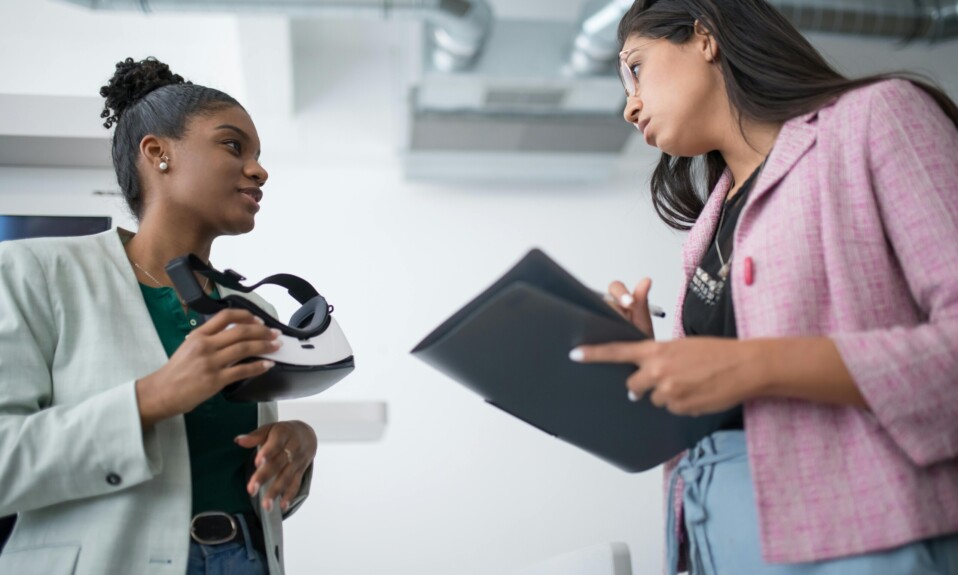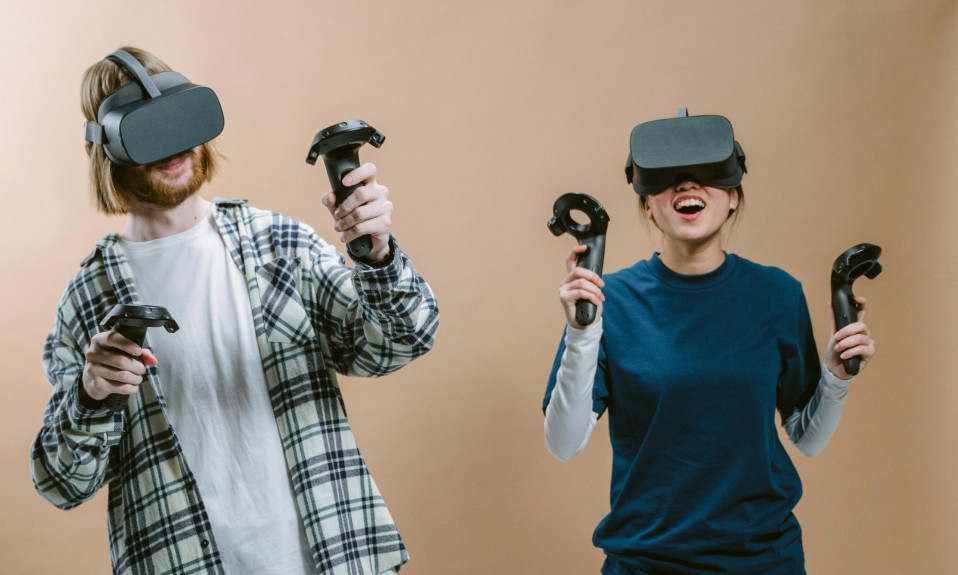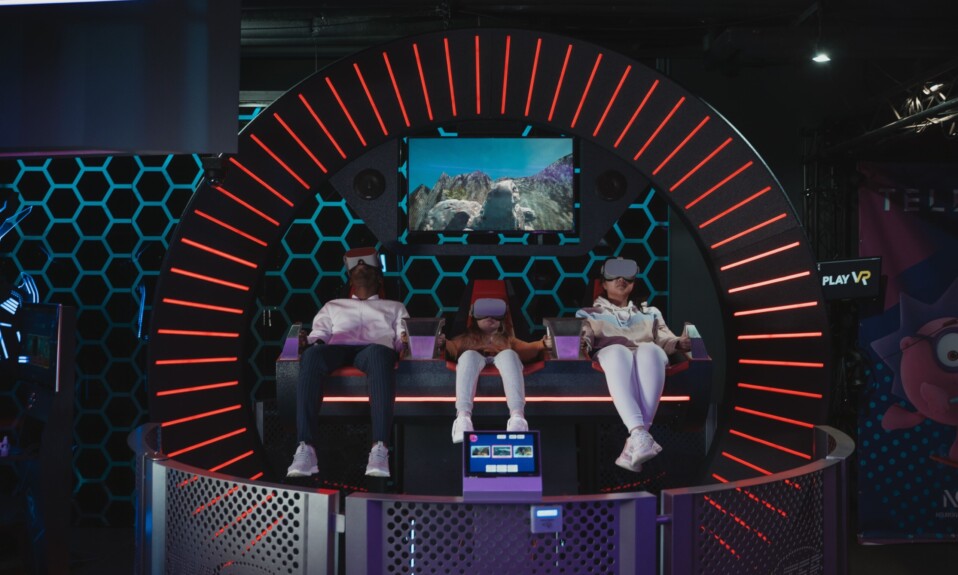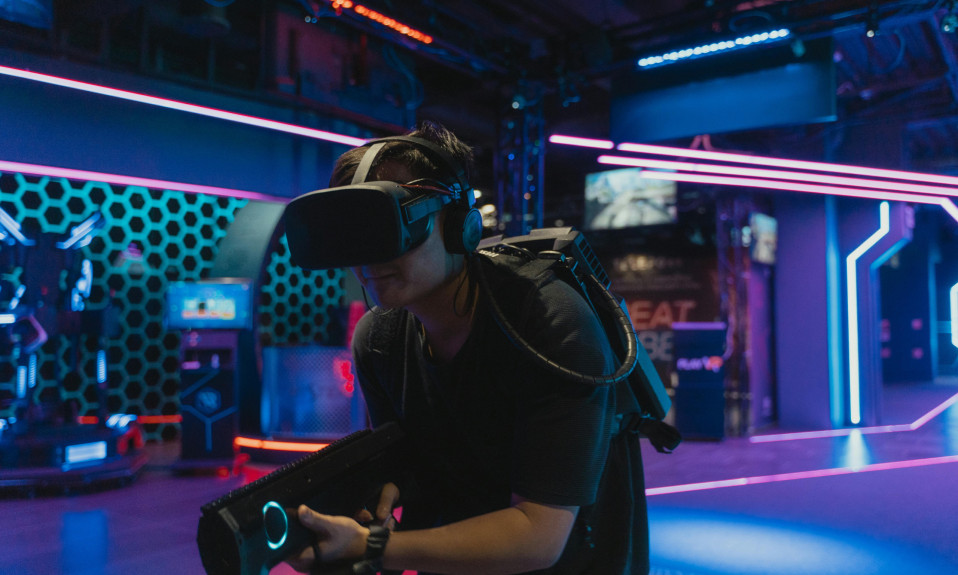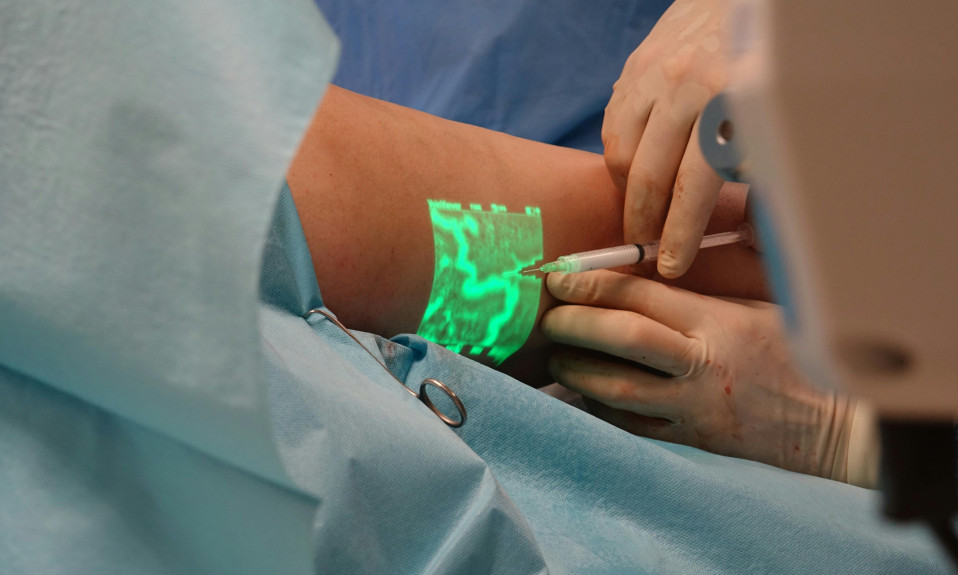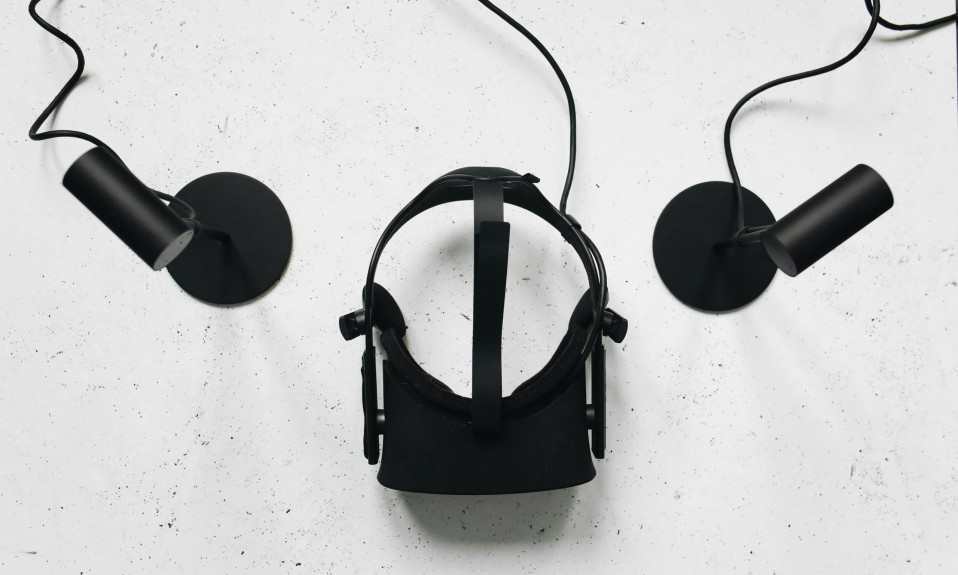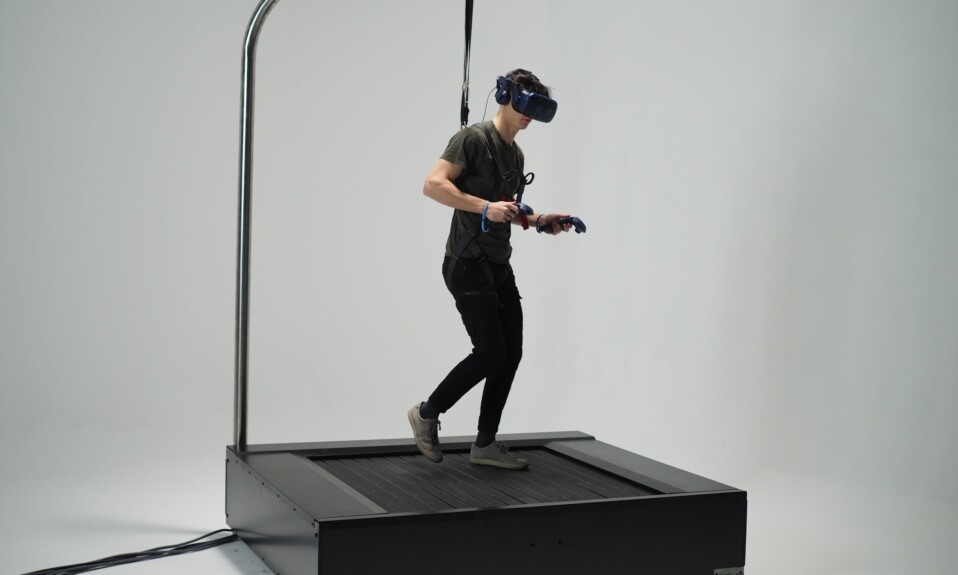Virtual reality enthusiasts and the mainstream media tend to obsess more over predicting revolutionary future possibilities than exploring how VR is currently being used and woven into people’s daily lives.
From its conceptualization to inception, virtual reality technology has been rapidly integrated into several industries, pushing the boundaries of its relevance, cultural significance, and broader applications.
While mainstream adoption is often attributed to its role in gaming and entertainment, the applications of virtual reality span the healthcare sector, sports and fitness, and tourism.
With an ever-growing content library, hyper-realistic visuals, haptic feedback technology, and subsidized costs of hardware and accessories, VR experiences are becoming more appealing and immersive for everyday users.
This article examines practical applications of virtual reality technology across multiple industries, with a focus on use cases and examples that provide context.
Without further ado, let’s get started.
I do not want a discount, said no one ever! Upgrade your VR setup today with top-tier accessories—use code META20 for 20% off + free shipping on orders over $15. Level up your VR experience now ➡️ Shop & Save!
Quick Navigation
Virtual Reality in Healthcare – Clinical Medicine
The application of virtual reality in the healthcare industry presents some of the most compelling use cases of immersive digital technologies in surgical training, preoperative planning, cue exposure therapy, and pain management.
Some sources believe that the role of virtual reality in clinical medicine dates back to the early 1990s, particularly in the use of VR to visualize complex surgical data and pre-surgical planning procedures.1
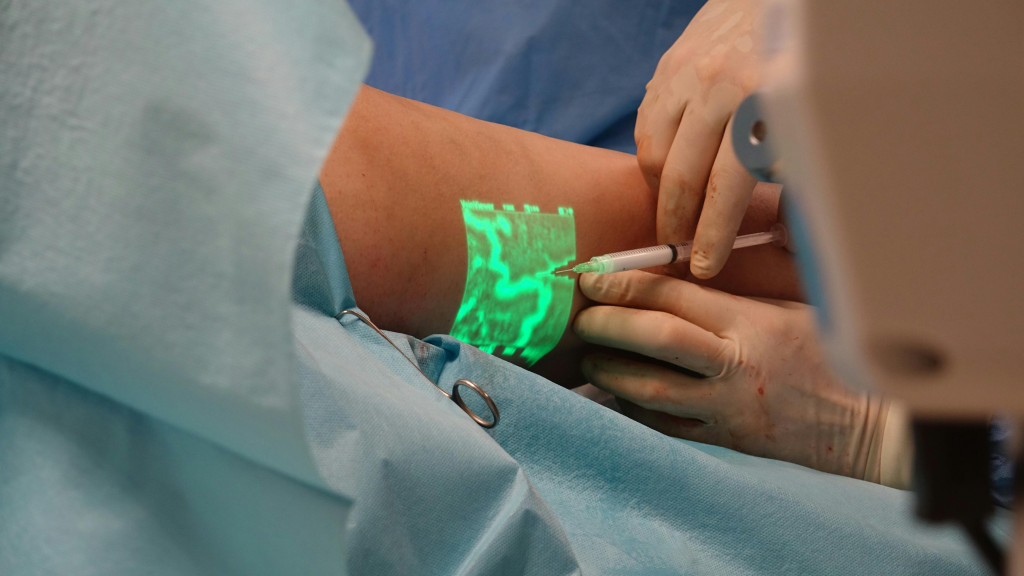
Surgical Training:
Several constraints inadvertently reduce hands-on experience for medical students and junior doctors. Some of these include decreased work hours, limited real-time access to complex surgical procedures, and ethical concerns.
Recognizing the need for well-grounded training, many medical schools and training institutes now utilize VR simulations to provide comprehensive training opportunities for students.
Compared to traditional training methods, which rely on diagrams, physical models, and verbal explanations, VR simulations provide a more realistic and intuitive learning experience for medical students.
In virtual reality, the anatomical structures of the human body come to life, enabling trainees to visualize and interact with complex 3D structures, gain a deeper understanding of bodily functions, and perform surgical procedures in a risk-free environment.
VR surgical simulators replicate physical operating rooms and surgical environments, enabling trainees to practice surgical procedures without exposing patients to potential harm.
These training environments are especially useful for practicing invasive procedures such as laparoscopy, where inexperience could put patients at risk.
Virtual patients are typically avatars with built-in biological systems that accurately model human anatomy, ensuring surgical operations are as realistic as possible.
Most importantly, the assessment and subsequent scoring of trainees after virtual surgical operations are automated and documented instantly.
Trainee performance is evaluated based on standardized and objective metrics, eliminating personal biases and subjectivity that may occur when evaluated solely by human supervisors.
Examples of VR simulators include Simendo, used for laparoscopic training; MIST-VR, used for minimally invasive surgical training; Procedicus VA simulator, used for arthroscopy training; and Osso VR.
Preoperative Planning:
Depending on the nature of proposed surgical procedures, medical practitioners or surgeons often perform preoperative planning to assess patient safety, identify potential risks, and predict the likely outcome of the procedure.
Virtual simulations enhance this planning process by providing a novel approach to determine the most optimal course of action for the intended operation. By creating accurate digital representations, VR enables surgeons to rehearse procedures before stepping into the operating room.
For orthopedic surgeries involving bone reconstruction or replacement, VR simulations can render highly accurate 3D mesh models of patients’ skeletal structures using imaging data from CT and MRI scans.
Reconstructive surgeries of the jawbone or facial skeletal system may also incorporate angiogram data to map the arrangement of blood vessels in 3D, thereby reducing the risk of intraoperative complications.
Patient-specific 3D models, combined with VR tools, enable surgeons to manipulate virtual bone fragments, determine the optimal configuration for implants, and practice risk-free procedures such as bone cutting, drilling, and burring.
VR-based preoperative planning reduces the likelihood of major complications and increases the chances of favorable outcomes by providing surgeons with a more realistic prognosis.
A prominent example is HipNav, developed at Carnegie Mellon University to support surgeons in Total Hip Replacement Surgery (THA). It helps determine the optimal proportion and alignment of implants, improving both precision and patient outcomes.
I do not want a discount, said no one ever! Upgrade your VR setup today with top-tier accessories—use code META20 for 20% off + free shipping on orders over $15. Level up your VR experience now ➡️ Shop & Save!
Virtual Reality Exposure Therapy (VRET):
Cue exposure therapy is a conventional treatment method for phobias and psychological disorders that involves exposing patients to specific cues, triggers, or social situations in an attempt to diminish the emotional and behavioral responses to these stimuli, thereby promoting habituation and desensitization.
Simply put, cue exposure therapy helps people with psychological disorders or phobias by gradually exposing them to their specific triggers, with the goal of reducing their effects over time.
In a 2021 study on the role of VR in mental health, virtual reality exposure therapy (VRET) was labeled as a modern variant of cue exposure therapy.2
The use of virtual reality simulations to supplement cue exposure therapy is the core idea driving its adoption, particularly in cases where patient-specific triggers may be difficult to replicate in physical reality.
Virtual simulations offer a greater degree of flexibility and control in designing, actively monitoring, and evaluating social engagements compared to the complexities and unpredictability of real-world interactions.
Beyond phobia treatment, virtual reality exposure therapy is also used as an assessment tool for diagnosing psychological disorders and as a therapeutic tool for pain management and cognitive impairment.
Several studies have investigated the use of VRET as a treatment method for anxiety disorders, post-traumatic stress disorder (PTSD), obsessive-compulsive disorder (OCD), addiction, eating disorders, psychosis, autism spectrum disorder, and more.
For instance, in a 2013 study on VRET for social anxiety disorder, virtual reality exposure therapy was found to be equally as effective as traditional group exposure therapy in addressing limiting beliefs and unrealistic goal setting in social situations.3
Overall, virtual reality exposure therapy is perceived to be most effective when supplemented with standardized psychological treatment methods such as cognitive behavioral therapy (CBT).
Virtual Reality In Travel and Tourism
The core appeal of travel and tourism often lies in the intangible experiences they offer. Whether for leisure or business, people travel for relaxation, the thrill of exploration, or the joy of meaningful moments.
Virtual reality has several applications in travel and tourism, which can be grouped into three main aspects: a promotional tool for destination marketing, an educational tool for cultural tourism, and an assessment tool for tourists’ needs and preferences.
Some travelers also turn to virtual reality to satisfy similar desires by exploring immersive and interactive virtual worlds, engaging in social activities, and enjoying virtual entertainment.
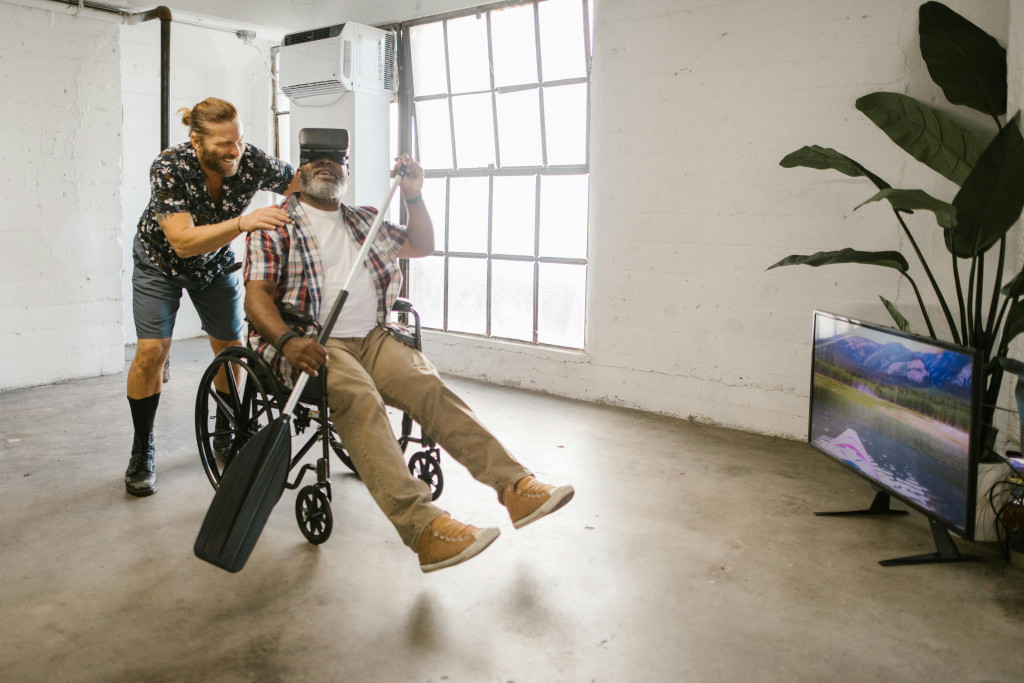
Destination Marketing:
In the context of virtual tourism, destination marketing involves recreating real-world attractions to enable prospective travelers to explore them, with the primary aim of inspiring a desire to visit in person.4
Several tourist attractions, including iconic sites such as the Eiffel Tower and Kenya’s Maasai Mara villages, have been digitally rendered, enabling users to experience and engage with these locations through their avatars.
Key players in virtual tourism use the phrase “Try before you buy” to illustrate the role of virtual reality in promoting the sale of tourism products.
Prospective travelers can go on guided virtual tours of hotels, landmarks, and nearby restaurants before booking reservations—helping them gain a more realistic sense of what to expect.
For instance, while a travel agency may develop virtual recreations of theme parks or tourist sites to replace physical brochures, a museum may utilize VR to bring sculptures and artifacts to life for engaging and interactive storytelling.
Throughout the various phases of a traveler’s journey, tourism agencies, tourist site administrators, and other stakeholders capitalize on virtual experiences to provide value.
A study on the effect of VR in tourism found that the sense of presence in virtual environments creates positive emotions and increases the likelihood that potential tourists will visit the destination in person.5
I do not want a discount, said no one ever! Upgrade your VR setup today with top-tier accessories—use code META20 for 20% off + free shipping on orders over $15. Level up your VR experience now ➡️ Shop & Save!
Tourism Education:
Virtual reality in tourism education shares some similarities with its application in destination marketing; however, their underlying objectives differ.
While the latter prioritizes virtual experiences as a promotional tool, tourism education emphasizes opportunities for students to engage in immersive and interactive learning.
Digital simulations of real-world monuments and rural settlements are recreated in virtual reality, allowing students to explore and learn about historical events as well as diverse cultural norms and practices.
Virtual reality also facilitates the simulation of non-existent historical landmarks and ancient relics, fostering contemporary learning experiences for both scholars and the general public.
This enhances learning outcomes and, in some cases, enables participants to engage in unique experiential opportunities that would otherwise be unfeasible from the confines of their homes.
A notable example of a tertiary institution using virtual reality in tourism education is the Hong Kong Polytechnic University’s School of Hotel and Tourism Management, which developed its virtual campus on Second Life.
Virtual Reality in Business: Manufacturing, Retail, and E-commerce
Some of the earliest applications of virtual reality were in the military, aviation, and automotive industries. Fast forward to today: the use of virtual reality in business spans several sectors, including manufacturing, retail, and e-commerce.
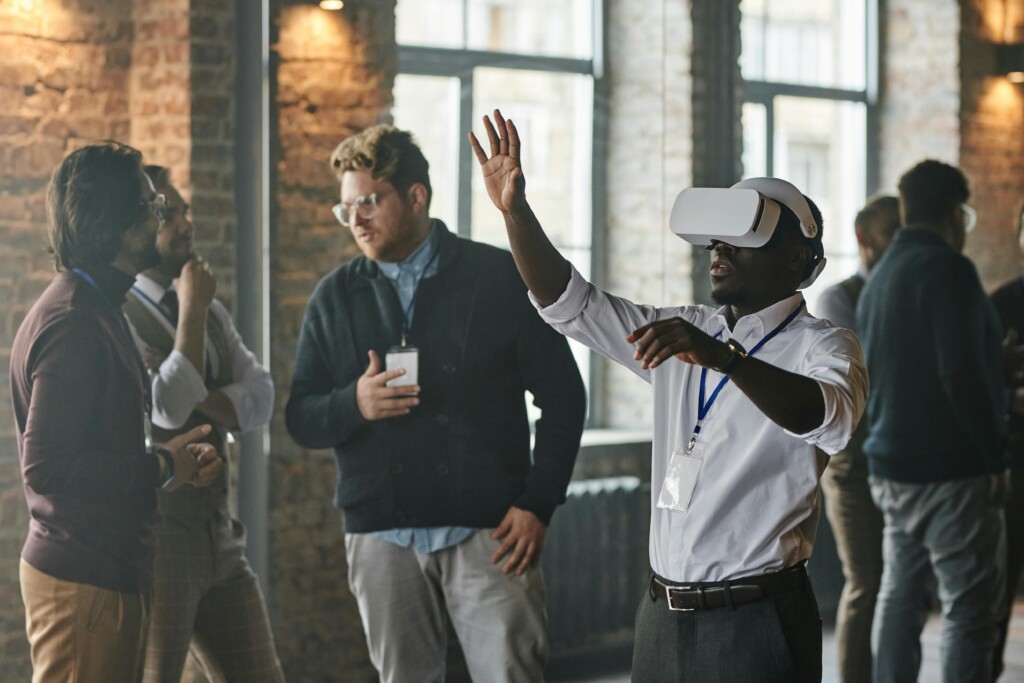
Design and Prototyping:
Businesses whose core services involve building automobiles, aircraft, and other mechanical engines use VR to reduce costs through virtual prototyping and design.
Physical components of aircraft and automobiles, as well as their processes and mechanisms, can be simulated, experimented with, and tested in VR.
This not only eliminates the time and financial constraints of building full-scale prototypes but also facilitates research and development. With VR, engineering teams and scientists can rapidly iterate and test new ideas.
Boeing and Airbus, two major corporations in the aviation industry, use virtual reality to support aircraft design, test new features, and develop subsequent models.
Retail and E-commerce
Borrowing from VR in travel and tourism, the principle of “try before you buy” clearly reflects how virtual reality is implemented in retail and e-commerce.
VR enables brands to engage with existing customers, reach new audiences, and showcase their products and services in immersive and innovative ways.
Several brands have created virtual showrooms or storefronts across popular VR platforms to build awareness and, in some cases, encourage prospective customers to make purchases after interacting with their products.
Companies that have adopted virtual reality include fashion brands such as Ralph Lauren and Gucci, footwear producers like Skechers, and furniture companies like IKEA.
Balenciaga developed a VR game that allowed users to explore virtual worlds and complete objectives with avatars dressed in the brand’s latest clothing collection.
This illustrates immersive gamification in virtual reality, where users enjoy the thrill of gaming while brands concurrently market their products.
Virtual Reality in Sports and Fitness
Virtual reality provides opportunities for novices, professional athletes, coaches, and other stakeholders in sport to enhance their skills and overall performance.
By using VR simulations of physical training environments, users can learn new techniques, practice against virtual opponents, and strengthen psychological abilities such as decision-making acuity and visual awareness.
While users engage in gameplay, motion-capture devices or sensors in VR headsets, controllers, or external base stations actively track and map their movements to avatars in real time.
Sensor monitoring ensures that users’ physical motions align with their virtual counterparts in scenarios such as kicking a football, running across the pitch, dunking a basketball, or swinging a tennis racket.
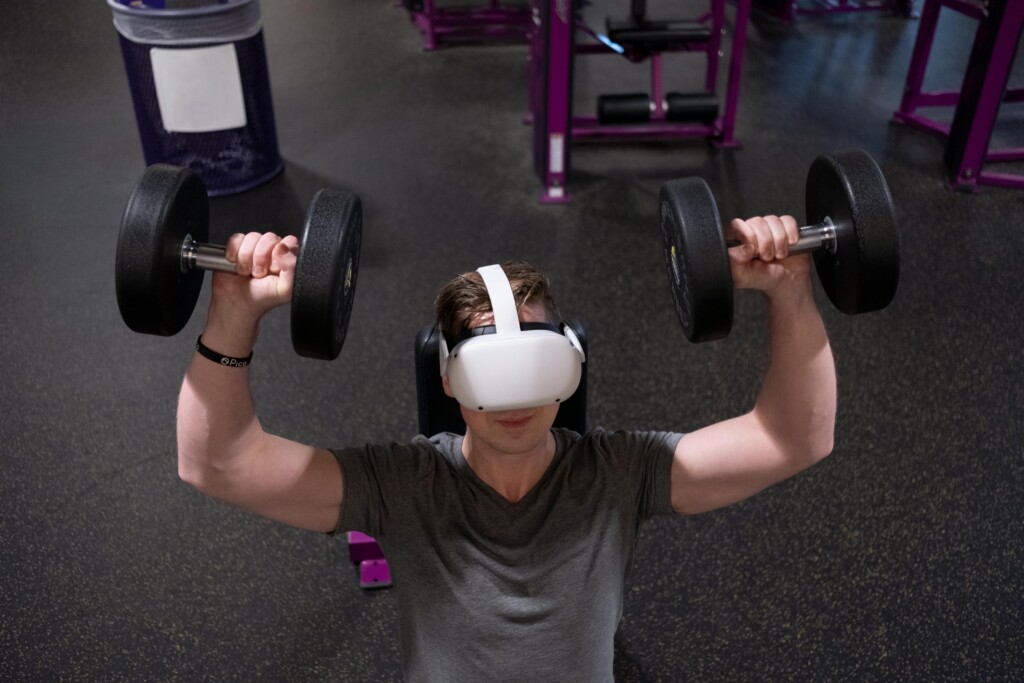
VR training programs also include post-session analysis for users and coaches to review performance, compare it against past games or specific opponents, and identify strategies and tactics for improvement.
Rezzil is a leading VR football training program that helps users develop practical skills transferable to the real world, whether as an outfield player or a goalkeeper.
The platform is valued by coaches from clubs like Liverpool and Juventus for rehabilitating injured players and improving performance routines, cognitive skills, and training drills.
Virtual Reality in Education
Some sources claim that virtual reality has been applied in education for more than half a century, most likely in reference to early applications such as flight simulation training in the mid-1990s.
The central premise of virtual reality in education is to enhance traditional learning approaches and significantly improve training outcomes for both academic institutions and commercial businesses.
Today, VR is widely used for training and enhanced learning experiences across multiple industries, as discussed earlier in surgical training and tourism education.

Where time and budget constraints exist, formal institutions rely on VR simulations to enable students to explore historical sites, visualize complex body systems, and replicate industrial processes, among other applications.
A study on virtual reality in education highlights its potential to boost motivation, facilitate deeper learning, improve long-term retention, and increase overall enjoyment for both students and educators.
Walmart, a multinational retail corporation, developed a VR training program to foster a positive work environment and boost engagement among its associates.
Final Thoughts On Virtual Reality Applications
From surgical training and tourism marketing to elite football programs, classroom learning, retail, and industrial prototyping, virtual reality continues to expand its reach.
What began as a niche technology with applications in only a handful of industries has now evolved to serve numerous sectors, providing immersive and interactive experiences that are redefining how people and businesses work, learn, and transact.
However, some applications remain in their early stages, with limited data available to fully evaluate their effectiveness. In this light, the use of VR across industries is best viewed as a complement to traditional methods of working, learning, and conducting business.
Looking ahead, it is likely that VR’s influence will extend well beyond entertainment and gaming. As the technology evolves, it could open new avenues for innovation, broaden its role across industries, and offer possibilities we are only beginning to imagine.
I do not want a discount, said no one ever! Upgrade your VR setup today with top-tier accessories—use code META20 for 20% off + free shipping on orders over $15. Level up your VR experience now ➡️ Shop & Save!
References:
- Kim, Y., Kim, H., & Kim, Y. O. (2017). Virtual reality and augmented reality in plastic surgery: A review. Archives of Plastic Surgery, 44(3), 179–187. ↩︎
- Emmelkamp, P. M. G., & Meyerbröker, K. (2021). Virtual reality therapy in mental health. Annual Review of Clinical Psychology, 17, 495–519. ↩︎
- Anderson, P. L., Price, M., Edwards, S. M., Obasaju, M. A., & Schmertz, S. K. (2013). Virtual reality exposure therapy for social anxiety disorder: A randomized controlled trial. Journal of Consulting and Clinical Psychology, 81(5), 751–760. ↩︎
- Rauscher, M., Humpe, A., & Brehm, L. (2020). Virtual reality in tourism: Is it ‘real’ enough? Academica Turistica, 13(2), 127–138. ↩︎
- Tussyadiah, I. P., Wang, D., Jung, T. H., & tom Dieck, M. C. (2018). Virtual reality, presence, and attitude change: Empirical evidence from tourism. Tourism Management, 66, 140–154. ↩︎

